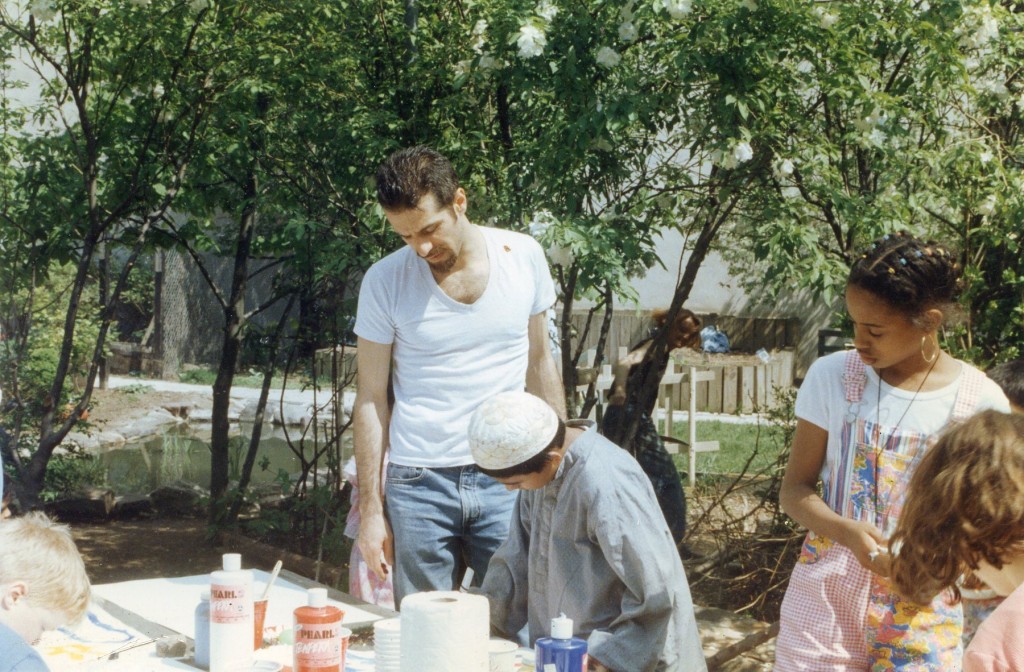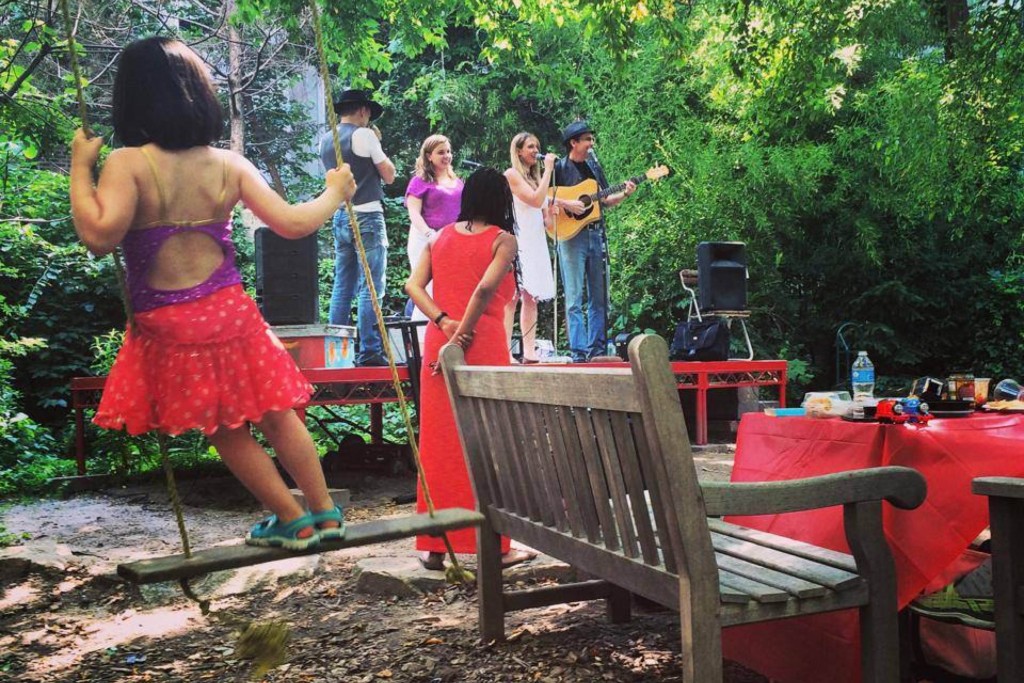Community Gardens
New York City’s Green Cosmos
In a dense urban setting such as New York City, a community garden stands out from concrete buildings as it beckons people into a calm, natural retreat. Community gardens in the United States date back to the economic depression of the 1890s, when twenty cities provided the poor with garden allotments. During World War I and World War II, “victory gardens” were planted to reduce the burden on the national food supply brought on by overseas war efforts and diminished farming. Soon growing food was no longer the only agenda of community gardens, which became spaces for introducing nature into the city, revitalizing neighborhoods, and educating residents. Over time, gardens have grown into active democratic spaces where diverse groups come together.
One such garden is the Green Oasis Community Garden located on the Lower East Side of Manhattan. During the 1960s and 1970s, the East Village suffered from arson and other forms of destruction that produced mounds of garbage and rubble, and drugs and crime dominated the streets. The need for revitalization of the neighborhood became obvious. With the goal of creating a safe haven for children and adults, Normand Valle and Reynaldo Arenas established the Green Oasis Community Garden in 1981.
The Dynamic Garden
Earth Celebrations, New York, NY, 1996, photograph courtesy of Green Oasis Garden.
Jan Werner is a longtime member of the Green Oasis Community Garden, and she is actively involved in the administration of the garden. Growing up in rural Texas, she always saw gardening as a chore and did not develop a passion until she moved to the city and realized that she missed the soil and the freshly picked tomatoes of her childhood.
The garden is a dynamic space. It began as a very sunny, flat plot of land perfect for growing food. However, over the years, leafy trees have made it difficult for produce and flowers to grow in their shade. Although the garden started as a place to grow food, over time it became a space where people could engage in other community activities. Werner’s relationship with it has also changed over the years, as she moved from working in the garden to becoming involved with beehives. There is no such thing as static garden. Plants grow and are harvested; trees are planted and attended to until they are big and strong. The gardeners’ relationships with the garden are not static either; they are constantly adapting to what the garden needs and is able to provide.
The Community Owning the Garden
Green Oasis Community Garden Trailer, https://www.youtube.com/watch?v=SiFEX7pSh94, May 18 2009, video by Vera Haller.
Green Oasis is located in one of the most representative immigrant neighborhoods in New York City, and the relationships between cultures behind the garden’s fences have always been congenial. For example, Chinese-American families come to the garden in early summer to collect mulberries from the mulberry tree, but the first time they did so, they were afraid the gardeners were going to scorn them for collecting the fruit. But when they were encouraged to return, they saw how welcome they were and understood that the purpose of the garden was to provide for the whole community.
The story of Nasima Kawshari, a Bangladeshi-American gardener, exemplifies the importance of cultural diversity inside the garden. She is the “master gardener” of the community, devising creative techniques to cultivate crops from her homeland that do not need much sun. Karshari has succeeded in accepting the garden’s natural conditions, not as an obstacle but as a measure of limits, guiding the selection of food she can grow each season. As a result of her successes, schoolchildren are able to learn how food is grown outside the dominant food system, and, more importantly, they are exposed to the diets of other cultures.
Connecting New York Citizens
Make Music NY Concert, New York, NY, June 22, 2014, photograph courtesy of Green Oasis Garden.
In a city the size of New York people tend to feel anonymous and want to connect with their communities in more meaningful ways than just paying rent. Green Oasis is a space where this can be done, because it provides a space where members of the community can relate to each other, and it offers broad possibilities for drawing many interests and resources into the scene. Not without its struggles, Green Oasis Community Garden has worked hard as a diverse community to keep up with changes in the neighborhood and in 2015 will celebrate its thirty-fourth anniversary. -X.V.L.

